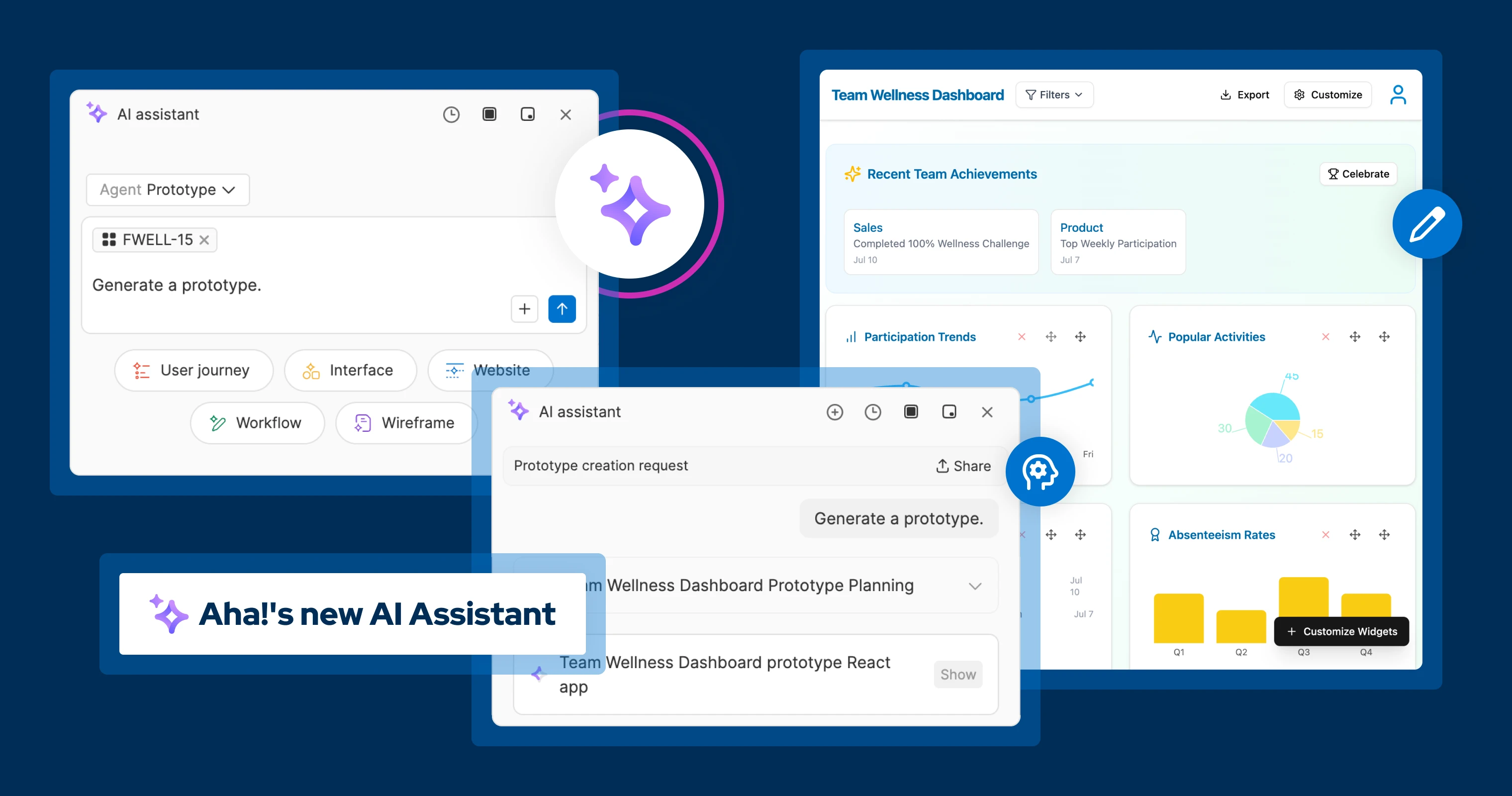
Aha! teammates goof off at an onsite event. | Photo by Jodi B Photography or Caption here | Photo by Aha!
Your execs might not have an AI strategy
AI is changing everything. We all know it. There are meetings happening right now at hundreds of companies to figure out just what to do. Execs are all nodding along — while secretly wondering how this new tech will create value for the business.
Most leaders know they must embrace AI. But the challenge is too many folks are talking about it as if it were a value unto itself rather than a driver of value.
Why the false facade? Because it is not clear:
What exactly will change, and just that change will happen (and is already happening)
How to reorient how people work and the organization's mindset
What it will all cost
Change is happening faster than we can fully comprehend it. So folks are embracing AI skunk works projects, fearing being left behind in the AI race — or worse, being labeled AI illiterate by those who are "AI struck" (the new "awestruck").
We are seeing a lot of "strategies" that are not rooted in strategy at all:
"We need to think AI-first."
"We need to reduce costs to fund more AI initiatives."
"We need to reposition our products as AI enabled."
These vague "just-do-something plans leave everyone on shaky ground.
I know this is true because I have spoken with a lot of company leaders about their plans for integrating AI into their product teams lately. As part of the early access program for the powerful new AI assistant in Aha! software, I personally met with dozens of executives to discuss what we were going to deliver and our vision for AI-powered product development teams.
What I learned from my conversations with other company leaders is that most people are feeling the pressure to leverage AI while still searching for the best way to do so.
Folks are now looking around for guidance on the best way forward. Though it is helpful to learn from what others are doing, companies also need to set their own vision for how they will work and the increased value they will deliver to their own customers.
I will readily admit that we are not immune to the AI frenzy in our own work. Our product team at Aha! is actively grappling with maintaining perspective, even as we rapidly integrate AI into our software. We recently had a conversation about how AI investments must map to existing priorities and product initiatives — we cannot consider and work on them in isolation.
AI can help multiply and accelerate achieving your strategy. But if that clarity of purpose does not exist within the organization, all you will intensify is confusion.
Let's not give AI too much credit or blame, either. The core of these struggles should be familiar to anyone who has had a long enough career in software — the same was true when www, mobile, and on-demand gave us fresh ways to delight customers.
The hard truth is that most of us need to stop pretending we have it all figured out and start doing the foundational work. Leaders need to share our view of the future and identify how AI can help get us there faster.
To realize the value of AI, you need to know what you will use it for (and why), as well as what needs to change organizationally.
Product builders must not lose track of what makes them unique. How do you solve challenges your customers have better than anyone else?
This is where we start:
Be honest about the specific problems we are trying to solve ...
What outcomes we are measuring
And whether we have the capabilities to do the work
Remain grounded in the problem and your solution. Then, use AI to help solve it in even more compelling ways. That is the future.
My advice: Stop nodding along in those AI strategy meetings and get back to the basics. When you do, the specific AI investments that you should make will become increasingly obvious.
Discover the new Aha! AI assistant —> it will change how you build products.




